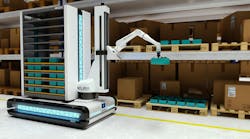Companies are grappling with how to understand the major shifts they are facing, according to Susan Stautberg, co-founder and global co-chair of WomenCorporateDirectors (WCD).
"Who their customers are, how to attract the talent they want, and who the competitors are for both – these are the kinds of issues that surfaced around this year's proxy season and in the conversations among directors outside formal board meetings," said Stautberg.
Here are some hot points of discussion the group discovered during its 2014 Institutes and events.
Rethinking the "consumer pyramid": The billion people at the bottom of the world's consumer pyramid are demanding a completely new strategy for engagement. "Historically, large companies have viewed this group as the recipients of their public policy work, to whom companies donated goods and services," says Sandra Peterson, executive committee member of Johnson & Johnson. But technology changes are making this population more accessible to more knowledge that companies can offer. "You can now reach this market through mobile technology, such as providing healthcare education to villages that were at one point cut off. The people there are becoming consumers earlier, and are the middle class consumers of the future." This opens opportunities for companies both competitively and in their social responsibility efforts.
Rethinking your business model: "One of the best things a company can ask itself is 'What if we could not make any money at all on our core business?'" poses futurist Edie Weiner, chairman, Weiner, Edrich, Brown, Inc. As business models are being disrupted more rapidly than ever, leadership should be forcing itself to think about the ways a company could sustain itself if it lost its key revenue source. "This question starts directing you into possibilities that would interest Wall Street and others, who want to know how you might leverage other assets and potential revenue streams."
Rethinking the supply chain: In the U.S., both environmental and competitive pressures are driving companies to return some of their manufacturing back to the States. "These days one has to be able to manufacture goods and be responsive to the changes in the market," says Alice Gast, a director at Chevron."Changing over a plant in China is extremely long and cumbersome and difficult, whereas with our new technology combined with low energy prices, one can have an efficient plant domestically that can change out the product and make something different with the agility that is needed to remain competitive." Not "outsourcing" production to heavily-polluting plants also creates opportunities to "build plants that are more efficient and 'smarter' and conserve energy," allowing companies to take into account what the true impact of their energy consumption is.”
Rethinking how to attract talent: Within the next 20 years, 100 million educated workers are expected to move into cities globally. "As companies are thinking about whom they are going to recruit into their workforce, it's important for them, and for governments, to look at what the life-work facilities are for families," says KPMG's Nancy Calderon. The "livability" of cities becomes a real concern for potential employees, who are not just coming into the city alone and sending money back home, but are instead bringing their families. "Features such as child care and health care near your place of work can make a real difference in workers' lives, and particularly women's lives."










